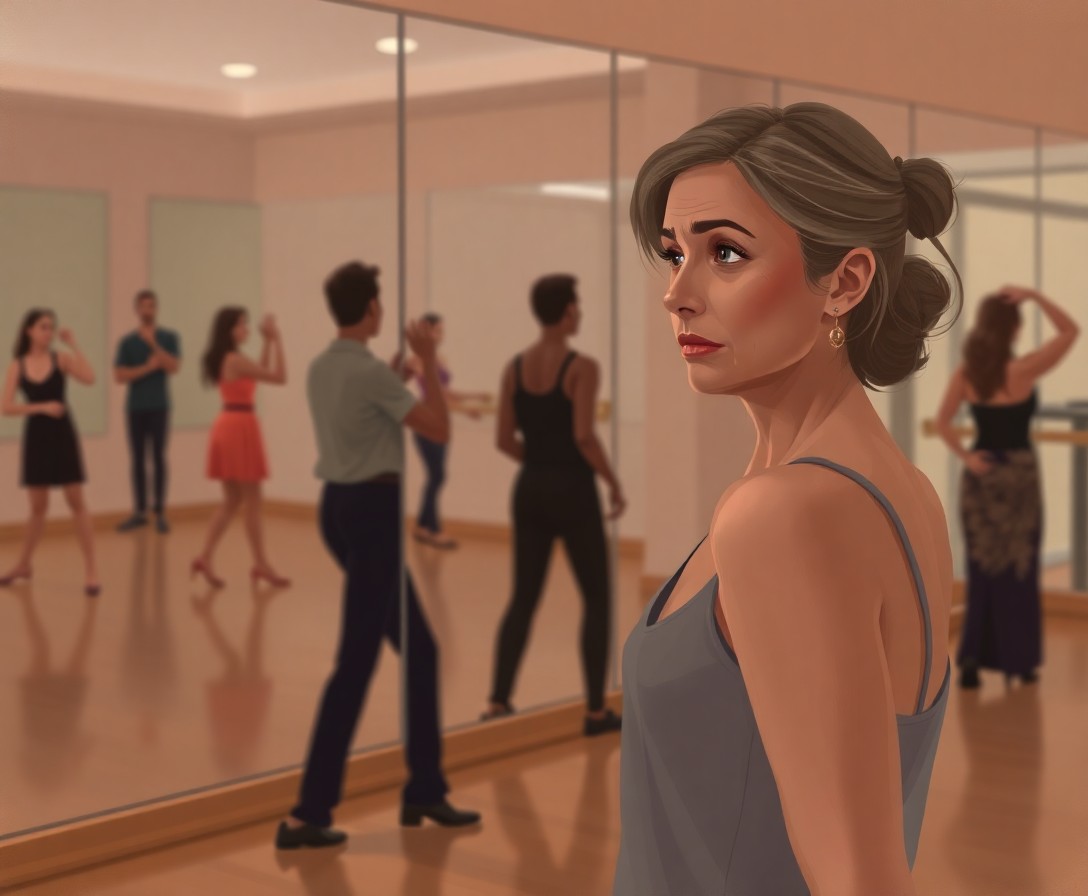🪞 “Everyone Is Better Than Me”: On Comparing Yourself in Dance – and How to Stop
We’ve all been there.
Standing at the edge of the dance floor, arms crossed, watching someone glide, isolate, pivot, and pause with what looks like effortless mastery — while you still feel like you're arguing with gravity just trying to do a simple step.
Whether you're in your first week of Kizomba Fusion or your third year, that creeping voice tends to show up:
“I’ll never be like them.”
“Why does she look so natural, and I feel like I’m buffering?”
“He hears things in the music I didn’t even know existed.”
Welcome to one of the most common and quietly painful experiences in dance:
comparing yourself to others.
Let’s take a closer look at what’s happening to us, and by the end of this article, we’ll explore some tools to help change the situation in a direction that better serves us.
🎢 Why We Compare: Your Brain’s Not Being Cruel — It’s Being Efficient
It’s important to understand: comparison isn’t a personal failure.
It’s something our brain automatically does — especially in new environments. We’re constantly scanning: Where do I fit? Who’s better? Worse? Am I safe here? Do I belong?
In dance — a space that blends body, emotion, music, and identity — this scan becomes more than just instinct.
It can turn into self-judgment, insecurity, even a reason to stop showing up.
But comparison only tells part of the story. And it often tells it wrong.
🌍 We Don’t All Start From the Same Place
This is one of the biggest truths we tend to forget in group classes:
Just because you're in the same class level doesn’t mean you’re starting from the same place.
Someone in your class might have:
- A background in contemporary, salsa, tango, or ballet.
- Years of playing a musical instrument and an intuitive sense of rhythm and phrasing.
- A job that involves body awareness (actors, yoga teachers, personal trainers).
- Or simply a brain that learns fast through physical imitation.
Meanwhile, you might:
- Be just stepping into your first-ever movement class.
- Be recovering from body shame, social anxiety, or fear of being seen.
- Need more time to understand movement intellectually before it becomes embodied.
- Learn deeply but slowly — which, by the way, often leads to longer retention and more nuanced skill later.
The classroom is equal, but the history isn’t.
The journey is shared, but the luggage is different.
You might be comparing your beginning to someone else's chapter 20.
Or worse — comparing your authentic style to someone else's Instagram-ready choreography.
When we do that, we miss the beauty of what our own journey is trying to teach us.
🧩 The Illusion of Effortless
When we watch skilled dancers, we tend to only see the result.
What we don’t see are the hours spent:
- Repeating the same body movement in front of a mirror.
- Feeling completely lost during class and wondering, “Am I ever going to get this?”
- Leaving socials early because of overwhelm.
- Watching videos obsessively, trying to decode timing, tension, or foot placement.
- Feeling the fear of getting it wrong — and coming back anyway.
We see the grace, not the grind.
Comparison filters out the struggle and romanticizes the result.
It’s like watching someone finish a marathon and thinking, “Wow, I should be able to do that now,” while forgetting they’ve trained for months, had blisters, setbacks, and doubts — and still chose to keep running.
⚖️ Is Comparison Always a Bad Thing?
Not entirely. In small doses, comparison can spark motivation.
Seeing someone dance with grace or bold musicality can inspire curiosity and growth:
“What are they doing that I could explore in my own way?”
“I love that detail — how would it feel if I tried something similar?”
But when comparison becomes about self-worth, it stops being helpful and starts being harmful.
You’re no longer saying, “That’s inspiring.”
You’re saying, “I’m not enough.”
And that’s the point where we lose connection — not just with the dance, but with ourselves.
💡 What You Don’t See in “That Dancer You Admire”
Here’s the twist: the people you admire are often struggling too.
They just got better at holding space for the discomfort.
Many advanced dancers still:
- Battle with impostor syndrome.
- Watch videos of themselves and cringe.
- Compare themselves to someone “more musical” or “more technical.”
- Go through phases where everything feels awkward again.
The difference is — they’ve seen this before.
They’ve ridden the wave enough times to know it will pass.
🧘 Tools to Shift the Mindset
1. Track Your Progress — Not Theirs
Compare yourself to… yourself. Film a video once a month. Keep a small dance journal. Notice subtle shifts — how something that once felt impossible now feels natural.
2. Celebrate Others Without Shrinking
Someone else's light doesn't dim yours. Their beauty doesn’t erase your growth. Let their brilliance expand the vision of what’s possible — not shrink your belief in yourself.
3. Speak It Out Loud
Saying “I feel behind” to a trusted partner, teacher, or group might lead to the answer:
“I’ve felt the same way.”
Vulnerability dissolves illusion.
4. Value Feeling Over Appearance
Kizomba Fusion isn’t about impressing. It’s about listening, expressing, co-creating.
If the dance feels connected and real — you’re already where you need to be.
✨ Final Reflection
Comparison will visit you — it’s human.
But whether it becomes your companion or just a passing thought is your choice.
The dancer next to you isn’t your competition.
They’re your mirror, your contrast, your reminder that every path looks different — and that’s the point.
If you’re showing up, listening, learning, being kind to yourself in the process…
You’re not behind.
You’re dancing.
You’re growing.
And you’re doing beautifully.
